
This June Lake Loop itinerary post contains affiliate links. If you make a purchase through these links, we may earn a commission at no additional cost to you. Learn more at my affiliate disclosure page.
Hiking Trails, Alpine Lakes, Cozy Campgrounds, and Local Beer — Here’s How to Spend a Weekend in the June Lake Loop
The June Lake Loop is a 16-mile scenic byway in California’s Eastern Sierra that winds past four alpine lakes, rugged hiking trails, and some of the most stunning mountain views in the state. It’s the perfect base for a weekend of outdoor adventure — whether you’re here for fall colors, summer paddling, or snowy winter vistas.
We’ve been coming to the June Lake Loop for years, drawn by its mix of natural beauty and small-town charm. Between the crystal-clear lakes, aspen-lined trails, dramatic peaks, and the welcoming local brewery scene, it’s become one of our favorite getaways in California.
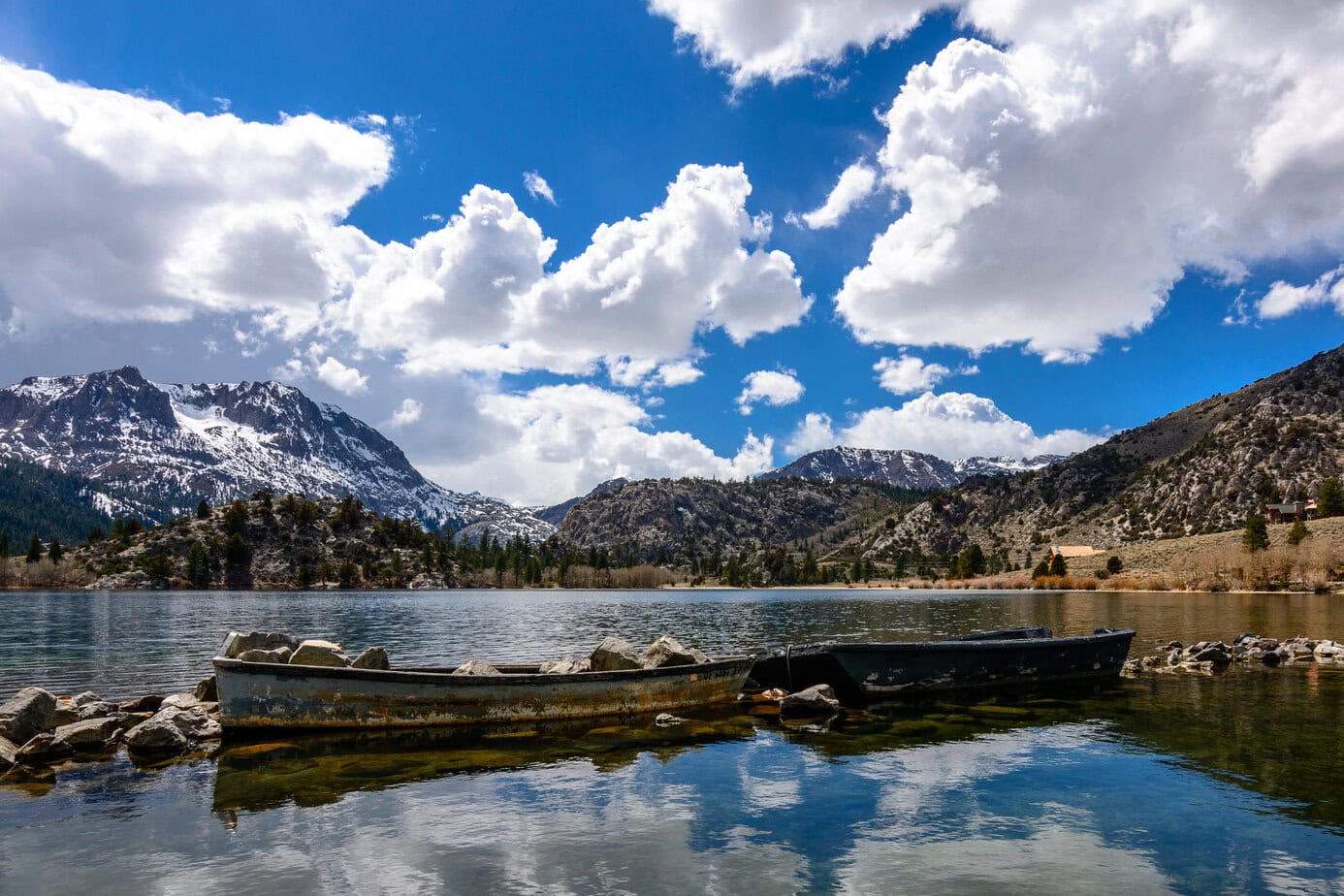
This June Lake Loop itinerary is built for a three-day escape filled with hiking, camping, and laid-back afternoons by the water. I’ve included our favorite trails, scenic stops, and food and drink recommendations so you can plan your own perfect trip.
Why Visit the June Lake Loop?
Unlike some of the more crowded destinations in the Eastern Sierra, the June Lake Loop has a laid-back, small-town vibe where the biggest decision of the day might be whether to paddle a lake or wander through golden aspen groves. Whether you’re here for fishing, fall colors, or just a weekend reset, it’s the kind of place that invites you to unplug, slow down, and breathe deep.
The village of June Lake is tiny — a scattering of lodges, a beloved local brewery, and a few small shops and cafés — but that’s part of its charm. I’ve been coming back for years, and somehow, I’m still finding new trails, hidden picnic spots, and cozy eateries. Some days it’s an alpine hike to a lake I’ve never seen before; other days it’s photographing the sunset turn Gull Lake to gold from the marina.
Here, you can summit a mountain before lunch, paddle a glacial lake by afternoon, and toast the day at June Lake Brewing. Whether you’re celebrating something special or nothing at all, the June Lake Loop is the kind of escape that stays with you — which is exactly why I keep coming back.
Where Is the June Lake Loop Located?
Tucked into California’s Eastern Sierra, the June Lake Loop is a high-altitude alpine paradise surrounded by dramatic peaks, glassy lakes, and fresh mountain air. Sitting at about 7,600 feet in elevation, this small mountain community is just off scenic Highway 395 — an easy and beautiful four-hour drive from Los Angeles.

Often called the “Switzerland of California,” June Lake is also a quieter, less crowded gateway to Yosemite National Park via the eastern Tioga Pass entrance. The loop itself (CA-158) passes four stunning lakes — June, Gull, Silver, and Grant — all framed by the rugged Sierra Nevada, including Carson Peak and its dramatic ridgelines.
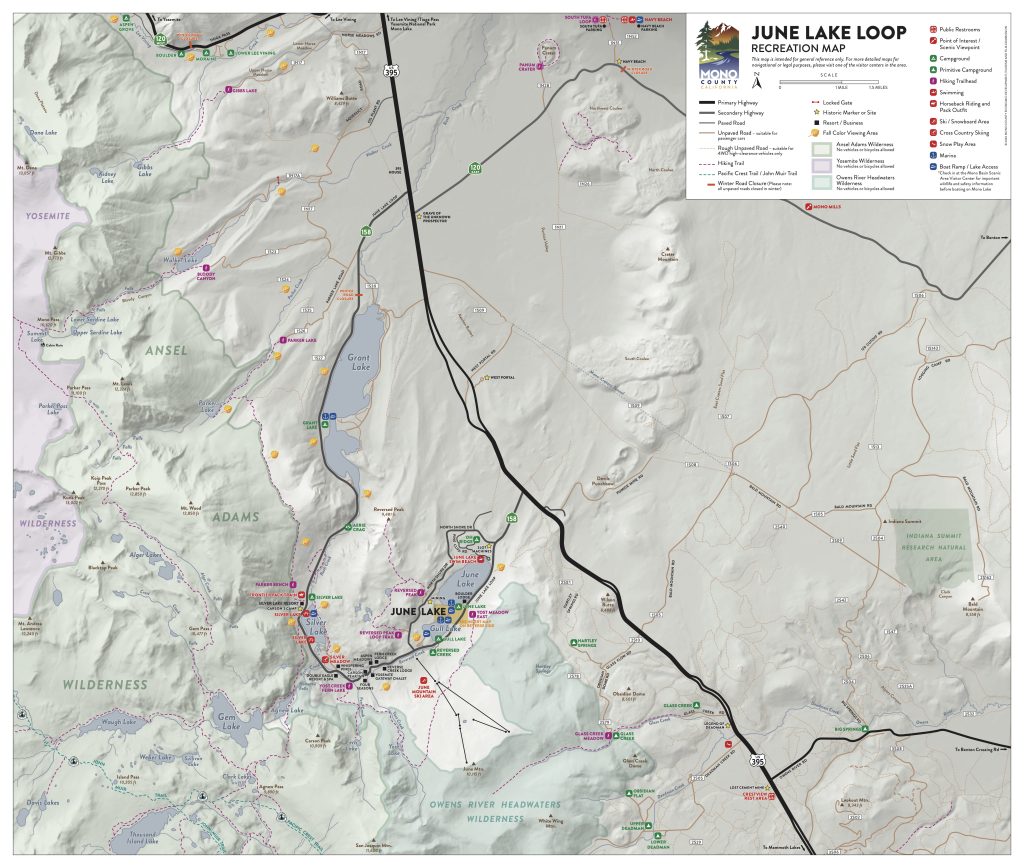
I’ve been coming to June Lake for decades in every season, but fall is pure magic. The June Lake Loop fall colors turn the entire valley into a golden tapestry of aspens — something everyone should experience at least once.
Getting to the June Lake Loop from Los Angeles
The June Lake Loop is about 330 miles from Los Angeles, taking roughly 4–5 hours by car. The most scenic route follows Highway 395 along the eastern edge of the Sierra Nevada, passing high-desert landscapes, alpine valleys, and small towns like Lone Pine, Independence, Big Pine, and Bishop.
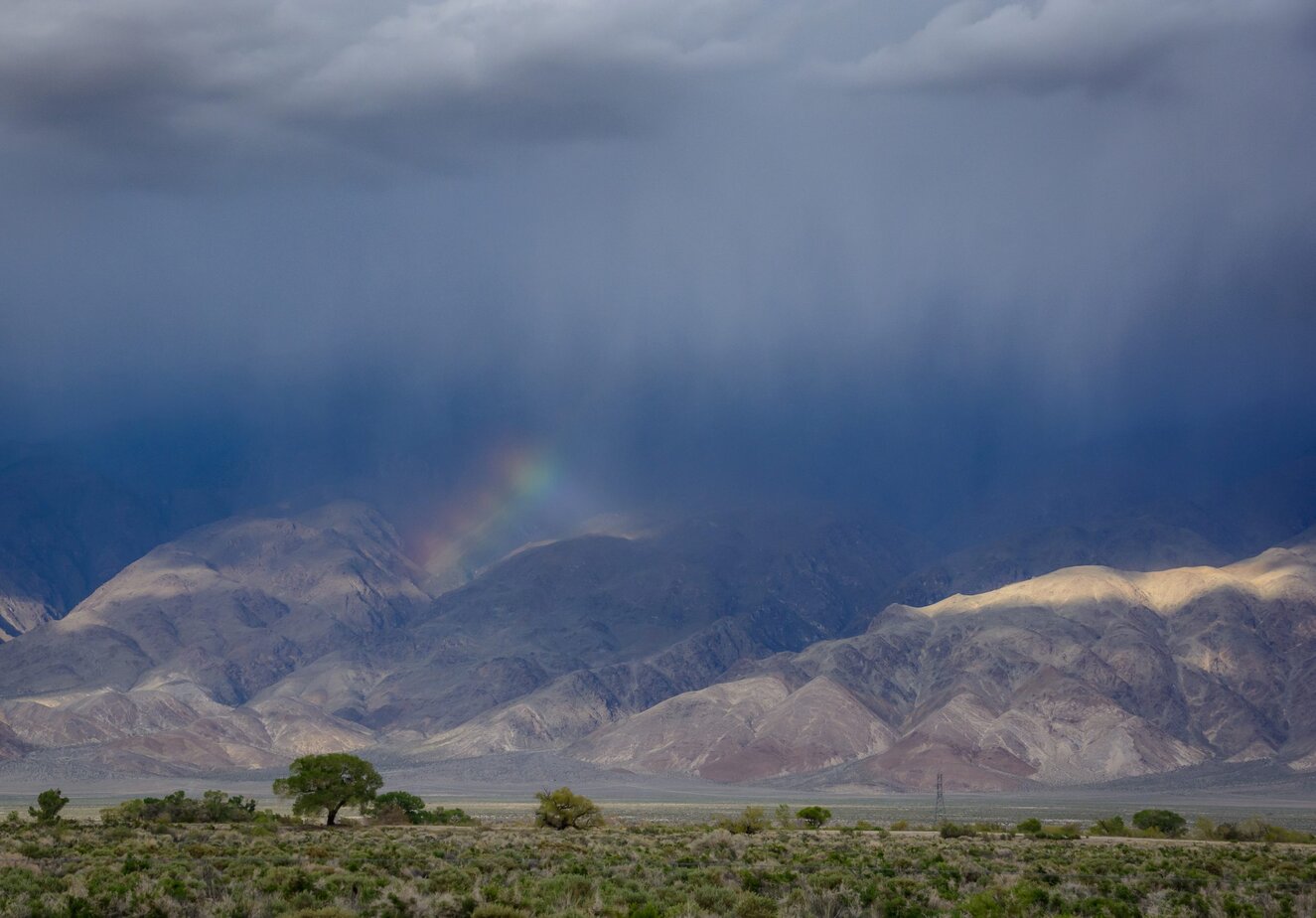
Suggested Route:
- Take I-5 North briefly, then connect to CA-14 North toward Palmdale and Mojave.
- Merge onto U.S. Highway 395 North — your main road for the rest of the trip.
- Just before Lee Vining, turn left onto CA-158 (June Lake Loop). This byway winds past June Lake, Gull Lake, Silver Lake, and Grant Lake before reconnecting with Highway 395 south of Lee Vining. Lee Vining is also your jumping-off point for Mono Lake and Bodie State Historic Park if you have extra time in your trip.
Local Tip: I recommend leaving early — around 5–6 AM — for a traffic-free drive out of Los Angeles. In about three hours, you can be in Lone Pine, enjoying breakfast with panoramic Sierra views before continuing north.
Winter Travel Note: Parts of CA-158 often close in winter due to snow, so check Caltrans road conditions before you go.
Best Time to Visit the June Lake Loop
One of the things that makes the June Lake Loop so special is that it truly has four distinct seasons — a rarity in California. Each season transforms the landscape in its own way, making the loop worth visiting year-round (as long as you’re prepared for the conditions).
Winter — Frozen Lakes & Snowy Trails
Winter in June Lake is pure magic. The mountains turn bright white, lakes freeze over, and the whole loop feels like a scene from a snow globe.

June Mountain Ski Area draws skiers and snowboarders, but even if you’re not into downhill sports (I’m not), there’s still plenty to enjoy — from winter hikes to a picnic on frozen Gull Lake. Just be prepared for road closures on parts of CA-158 and pack for icy, snowy conditions.
Spring — Melting Snow & Rushing Water
Spring brings the sound of meltwater rushing down creeks and over waterfalls. Wildflowers start blooming, and the air smells fresh and earthy. Most higher-elevation trails will still be covered in snow, so it’s not ideal for long backcountry hikes or camping unless you’re comfortable navigating in snow. But for lower-elevation walks and photography, it’s a beautiful, peaceful time to visit.
Summer — Long Days & Alpine Swims
By summer, the snow has retreated from most trails, though in early June you might still see lingering patches at higher elevations. July and August bring warm days, more visitors, and the occasional dramatic thunderstorm. The best part? You can swim in June Lake — a glacier-fed lake — after a long hike. Trust me, nothing feels better than diving into cold, clear alpine water with peaks towering above you.
(Pro tip: always carry a jacket and rain poncho — Eastern Sierra weather can change fast.)
Fall — Golden Aspens & Crisp Air
Fall is my favorite time in the June Lake Loop. From late September through early October, the entire valley glows with golden aspen leaves, drawing leaf-peepers and photographers from all over.
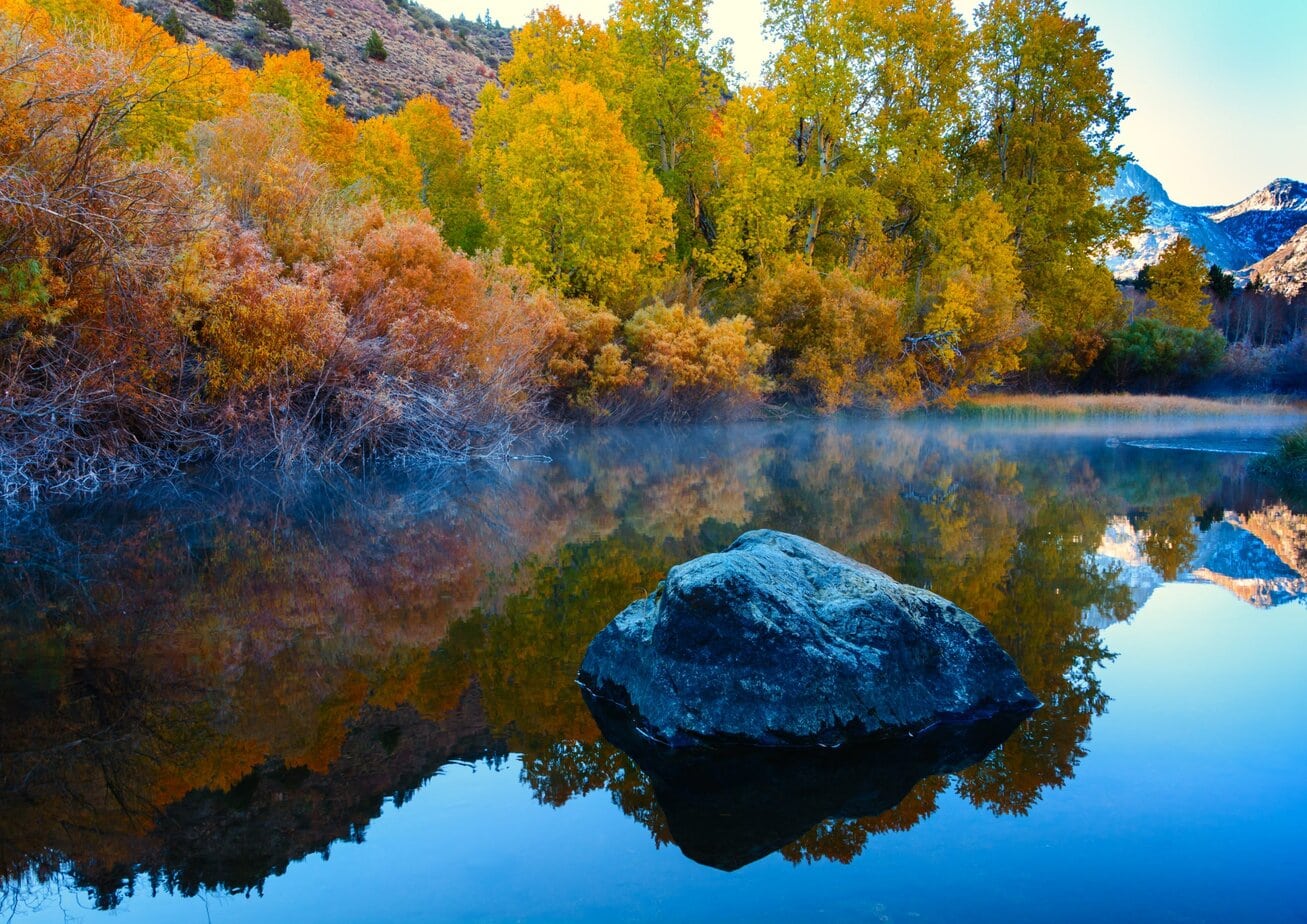
It’s the season for cozy campfires, beanies at night, and all-day drives from one scenic spot to the next. Trails are open, the air is crisp, and the light is perfect for fall photography —which is why I always pack my favorite camera backpack for this trip.
In short:
- Winter = snow, frozen lakes, skiing, winter hikes
- Spring = flowers, rushing creeks, lingering snow
- Summer = open trails, alpine swimming, afternoon storms
- Fall = peak foliage, crisp weather, perfect hiking conditions
Your 3-Day June Lake Loop Itinerary
Day 1: Los Angeles to the June Lake Loop
Early departure, scenic stops, and settling into Silver Lake Campground
Leave Los Angeles early — around 5 AM — to avoid traffic and catch the sunrise along Highway 395. The drive north is more than just a way to get to June Lake — it’s one of California’s classic road trips, lined with historic sites, dramatic desert landscapes, and jaw-dropping mountain views.
Optional Detour: Red Rock Canyon State Park (CA-14 route): If you’re taking CA-14 toward Mojave, make a quick stop at Red Rock Canyon State Park. The colorful cliffs and sandstone formations glow in early light, and you can stretch your legs on short trails right off the highway.

Stop 1: Lone Pine & Alabama Hills
About three hours from LA, Lone Pine sits at the base of Mount Whitney and the famous Alabama Hills rock formations. Start your day with breakfast at Alabama Hills Café, known for generous omelets, cinnamon rolls, and friendly service.
Pro tip: grab a loaf of their house-baked bread to go. You’ll thank me later when you’re biting into it at your campsite.
If climbing Mount Whitney is on your bucket list (it was definitely on ours), don’t miss our full trip report on our Mount Whitney adventure.
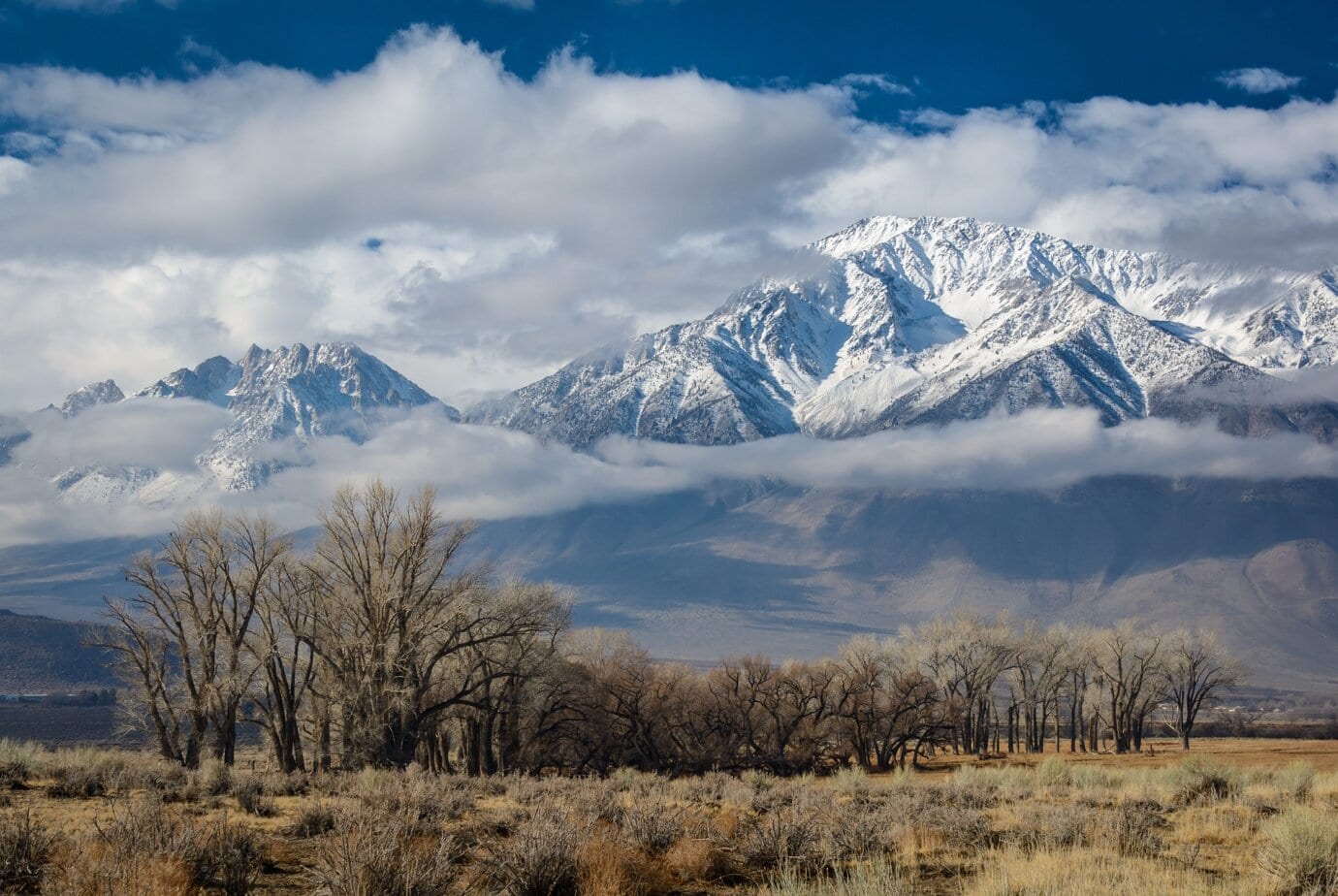
Before you head north:
- Eastern Sierra Visitor Center – Pick up maps, check road/trail conditions, and step out onto the deck for one of the best Sierra views anywhere.
- Alabama Hills Scenic Drive – Take Movie Road past filming locations and hike the short trail to Mobius Arch for a perfectly framed view of Mount Whitney.
Stop 2: Manzanar National Historic Site
Just 10 miles north of Lone Pine, Manzanar preserves the history of Japanese Americans forcibly incarcerated here during World War II. The interpretive center, reconstructed barracks, and auto tour route offer a moving, important stop. Plan at least 45–60 minutes.
Optional Adventure: Kearsarge Pass via Onion Valley
West of Independence, turn onto Onion Valley Road for a steep but scenic drive to the Kearsarge Pass Trailhead. This challenging hike is a highlight of the Eastern Sierra, with alpine lakes, granite peaks, and sweeping high-country vistas.
- Distance: ~11 miles round-trip
- Elevation Gain: ~2,600 feet
- Best Time: July–September (snow lingers into early summer)
- Trail Highlights: Gilbert Lake, Flower Lake, Heart Lake, Kearsarge Lakes, panoramic views from the pass
If you have time to split your trip into two days or start extra early, Kearsarge Pass is a bucket-list trail.
Stop 3: Big Pine
Small but mighty, Big Pine is a great place to pause, grab a bite, and consider a couple of unforgettable detours.
- Copper Top BBQ – Famous for tri-tip, ribs, and pulled pork sandwiches — a Highway 395 favorite.

From Big Pine, you can head in two different directions for epic adventures:
- West: Big Pine Creek Trailheads – Take Glacier Lodge Road to reach the starting point for the hike to Big Pine Lakes, a series of vivid turquoise glacier-fed lakes surrounded by jagged Sierra peaks. This is one of the most beautiful day hikes in California.
- East: Ancient Bristlecone Pine Forest (Optional Half-Day Detour) – Drive CA-168 into the White Mountains to see the oldest living trees on Earth — some more than 4,000 years old. The road is steep but paved, and the views along the way are spectacular.
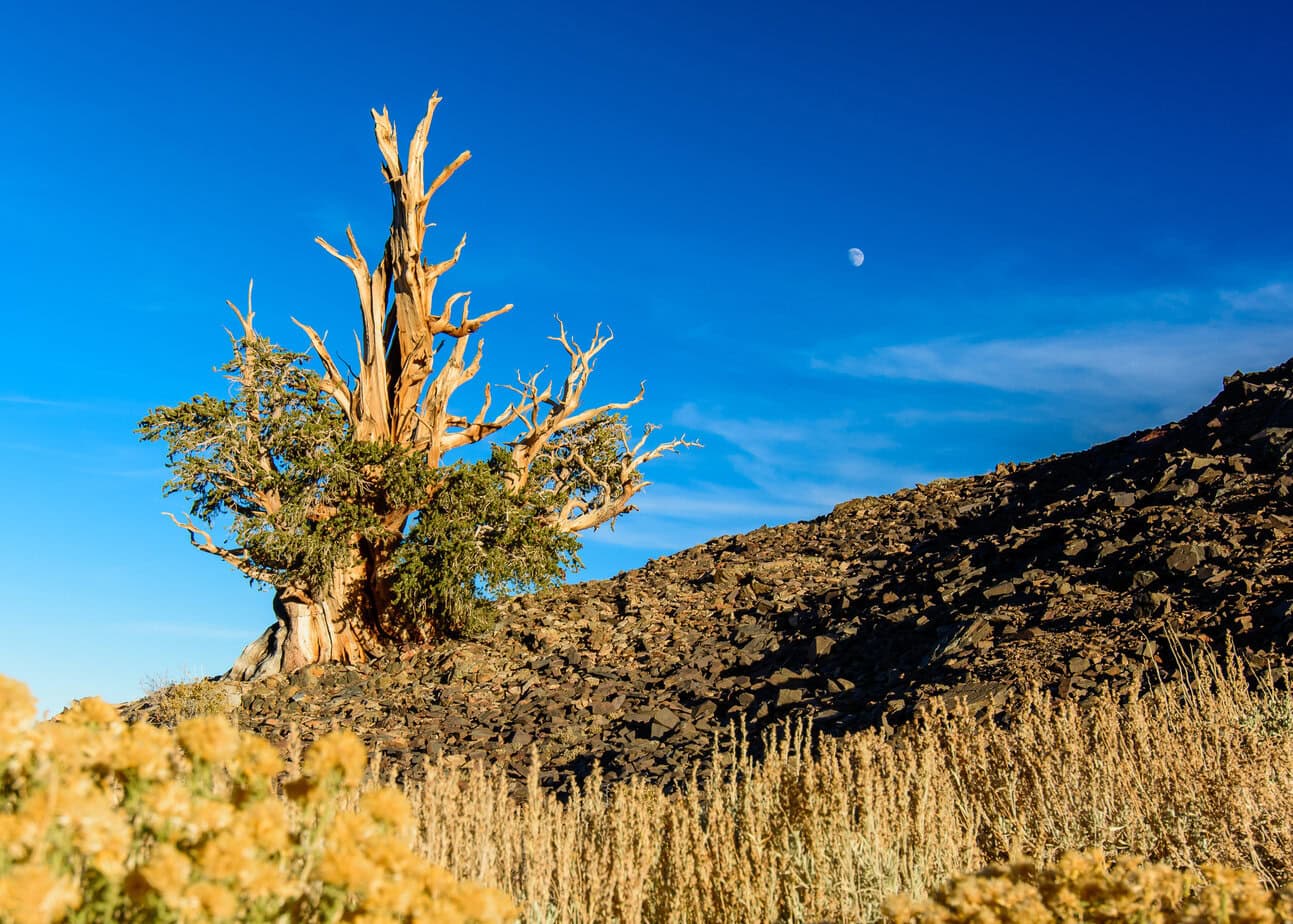
After exploring Big Pine or one of these detours, return to Highway 395 and continue north toward Bishop. Allow at least a half-day for this detour.
Stop 4: Bishop
Bishop is the largest town between Lone Pine and June Lake, making it perfect for a rest stop or supply run. Favorites include:
- Spellbinder Books – A great indie bookstore to find your next camp read.
- Erick Schat’s Bakkery – Famous for sheepherder bread and pastries.
- The Looney Bean – Cozy coffee shop with mountain views.
Stop 5: Convict Lake
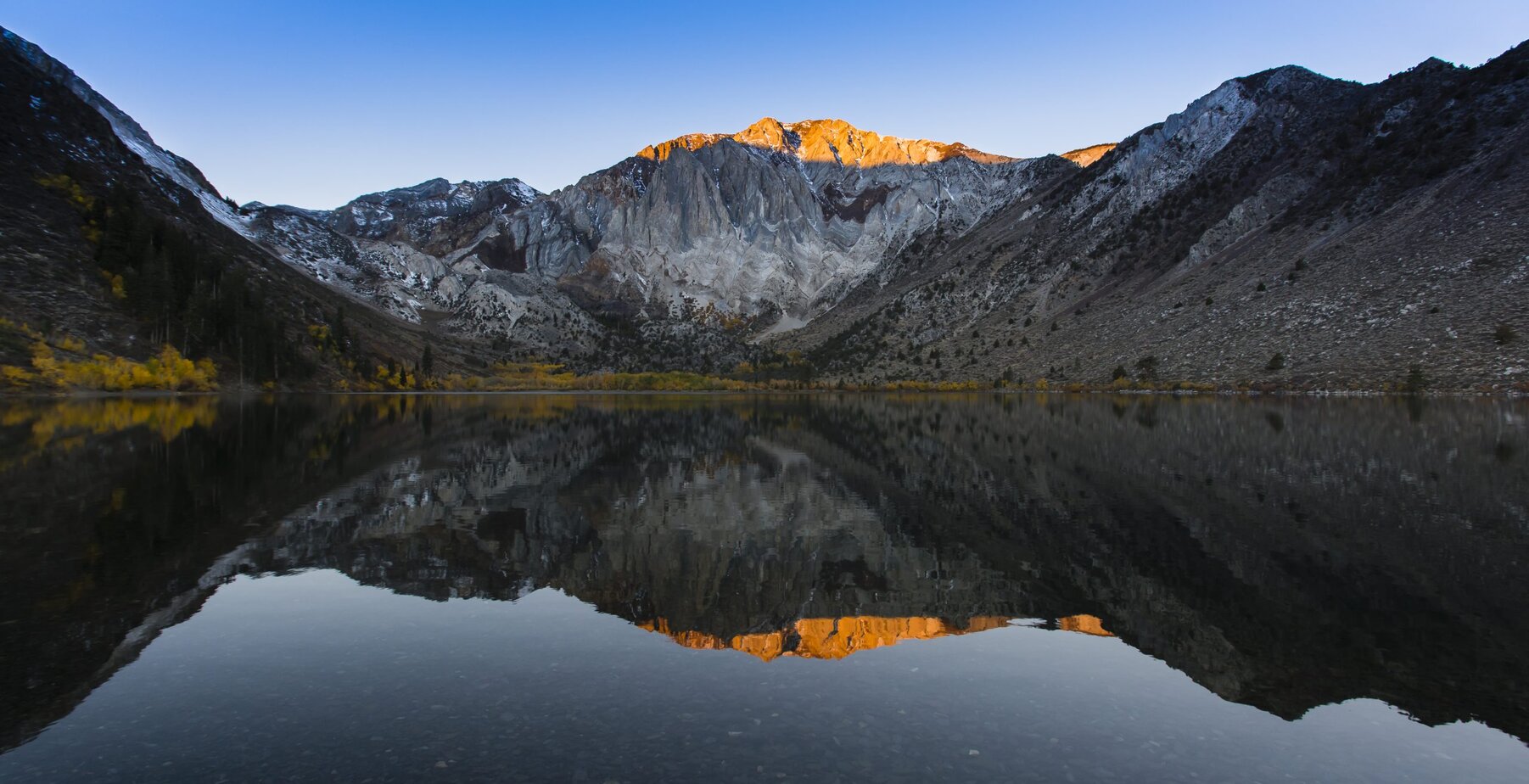
Right before the June Lake Loop turnoff, Convict Lake is a must-see. The 3-mile loop trail is flat and scenic, with glassy reflections of the surrounding peaks.
Local Tip: Sunrise here is unforgettable. If you’re staying nearby, plan one morning here with your camera.
Stop 6: Hot Creek Geological Site
Just south of Mammoth Lakes, the Hot Creek Geological Site is a quick but unforgettable detour. A short walk brings you to vivid blue geothermal pools and steaming vents set against a dramatic mountain backdrop.
In winter, the scene is especially striking — plumes of steam rising into crisp air, with snowcapped peaks in the distance. If you’re into photography, sunrise here can be magical, with soft light illuminating the steam against the snowy Sierra.
Stop 7: Mammoth Lakes (Optional Add-On)
If you have extra time before heading into the June Lake Loop, Mammoth Lakes is an easy and worthwhile detour.
In summer, drive into the Mammoth Lakes Basin to explore alpine lakes like Twin Lakes, Lake Mary, and Lake George, or take the Panorama Gondola to the top of Mammoth Mountain for sweeping Sierra views. Popular hikes like Crystal Lake and Duck Pass start from here, and Devils Postpile National Monument (seasonal access) offers unique basalt formations and a side trip to Rainbow Falls.
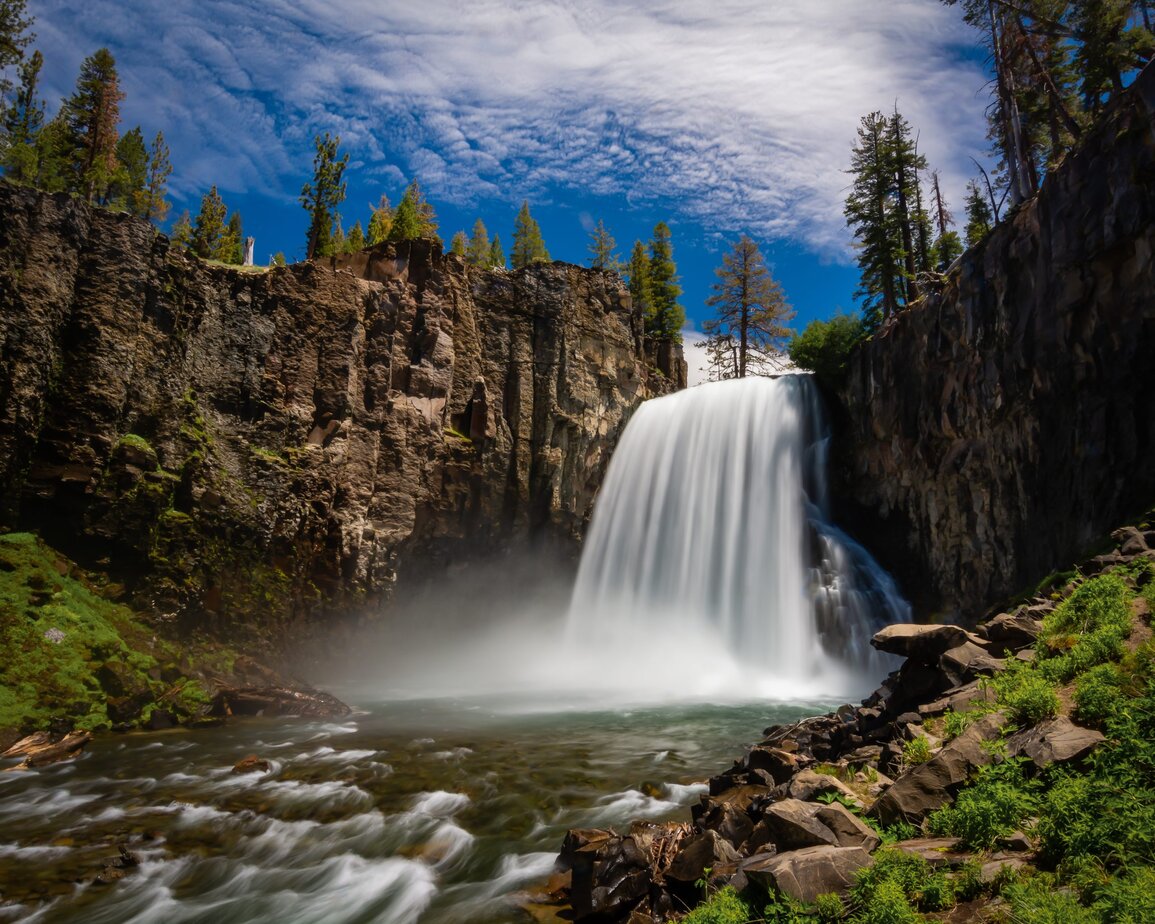
In winter, Mammoth is a world-class ski destination with a long season that often stretches into late spring. Whether you ski, snowboard, or just want to ride the gondola for snowy views, it’s a great way to break up the drive with some mountain time.
Stop 8: Silver Lake Campground, June Lake Loop
Head onto CA-158 (June Lake Loop) and make your way to Silver Lake Campground, where you’ll set up your base for the next couple of days. This scenic campground is surrounded by snowcapped peaks and sits right on the shore of glacier-fed Silver Lake.

Once you’re set up, take a short walk to the boat launch for a stunning view. Even if you’re not staying here, it’s worth a visit for the scenery alone.
Day 2: Yosemite High-Country Hikes & Scenic Drive
One of the best perks of staying on the June Lake Loop is being just minutes from Yosemite’s Tioga Pass entrance. In under half an hour, you can be in the park’s high country — a landscape of granite domes, alpine lakes, and vast Sierra views.
This day is all about Yosemite’s High-Country: hiking, scenic overlooks, and maybe a swim in a glacier-fed lake.
Logistics: Tioga Road (Highway 120) typically opens from late May/June through October, but dates vary with snowpack. Check Tioga Pass status before you go, and confirm whether a Yosemite entrance reservation is required for your visit.
Breakfast at Whoa Nellie Deli
Start your day with a stop at the legendary Whoa Nellie Deli, located inside the Tioga Gas Mart in Lee Vining. Don’t let the gas station setting fool you — the food here is incredible. Favorites include fish tacos, lobster taquitos, and hearty scrambles. It’s a great place to fuel up before hitting the high country.
Morning: Enter Yosemite via Tioga Pass
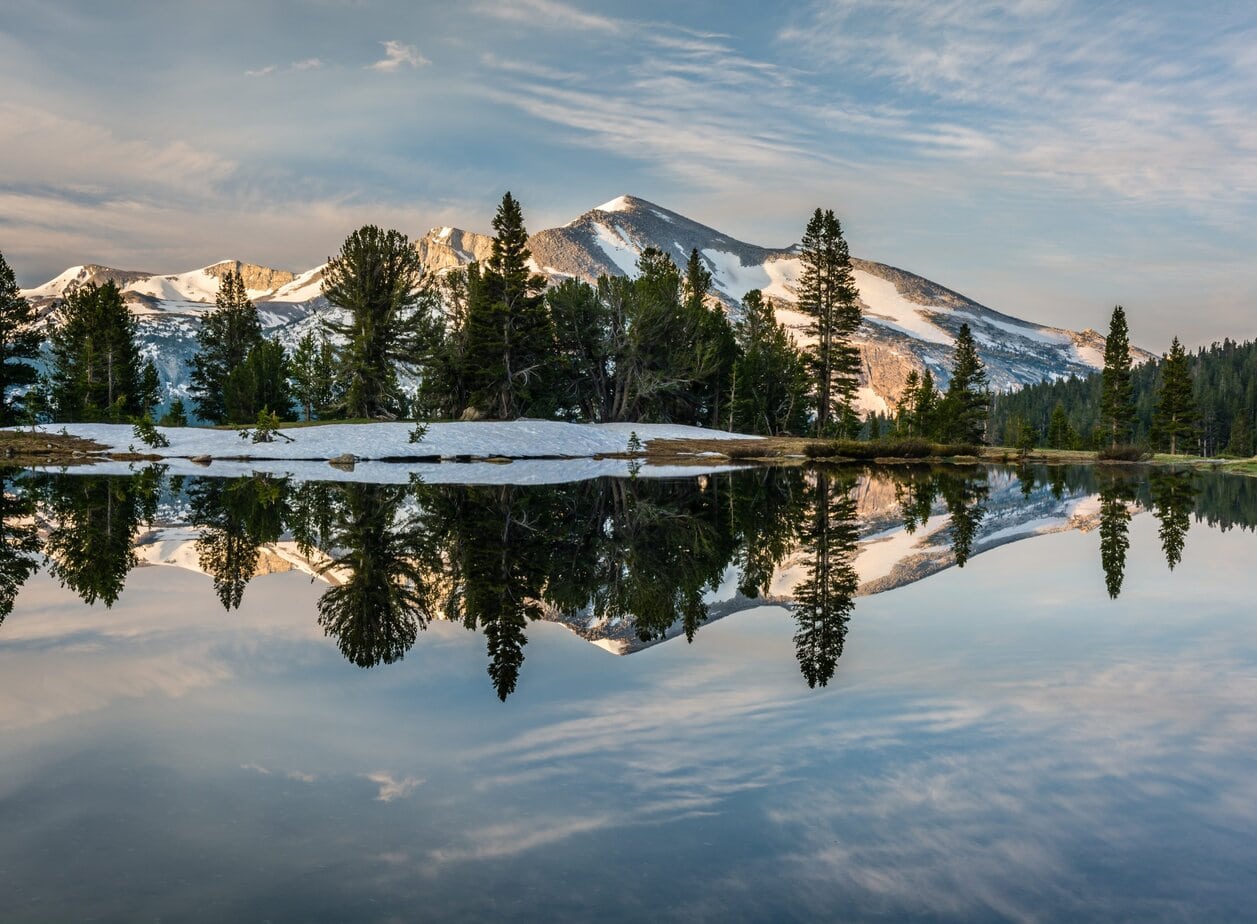
After breakfast, head west toward Tioga Pass (9,945 ft) and into Yosemite National Park. Before you even cross the park boundary, pull over at Tioga Lake Overlook for a peaceful alpine view — especially beautiful in the early morning light.
Choose Your High-Country Hike(s)
Pick one main hike or combine a few shorter ones depending on time and energy:
- Mount Dana Trail (6 miles round trip, 3,000 ft gain) – Challenging climb to over 13,000 feet with sweeping views over Mono Lake and Yosemite’s high peaks. Snow can linger into summer; turn back if conditions feel unsafe.
- Gaylor Lakes (2 miles round trip, 500 ft gain) – Short but dramatic, with ridge-top views and turquoise alpine lakes.
- Cathedral Lakes (8.2 miles round trip, ~1,000 ft gain) – Classic Yosemite alpine scenery, with Upper and Lower Cathedral Lakes framed by granite spires.
- May Lake (2.5 miles round trip, 500 ft gain) – Short, steady climb to a serene alpine lake; extend to Mount Hoffmann for summit views.
- Lembert Dome (3.8 miles loop, 800–900 ft gain) – Moderate climb with sweeping Tuolumne Meadows views.
- Tenaya Lake Loop (2.5–3.5 miles flat) – Easy lakeside walk with plenty of picnic and swim spots.
- Olmsted Point Nature Trail (0.4 miles) – Panoramic views of Half Dome, Clouds Rest, and Tenaya Canyon.

Midday: Tenaya Lake
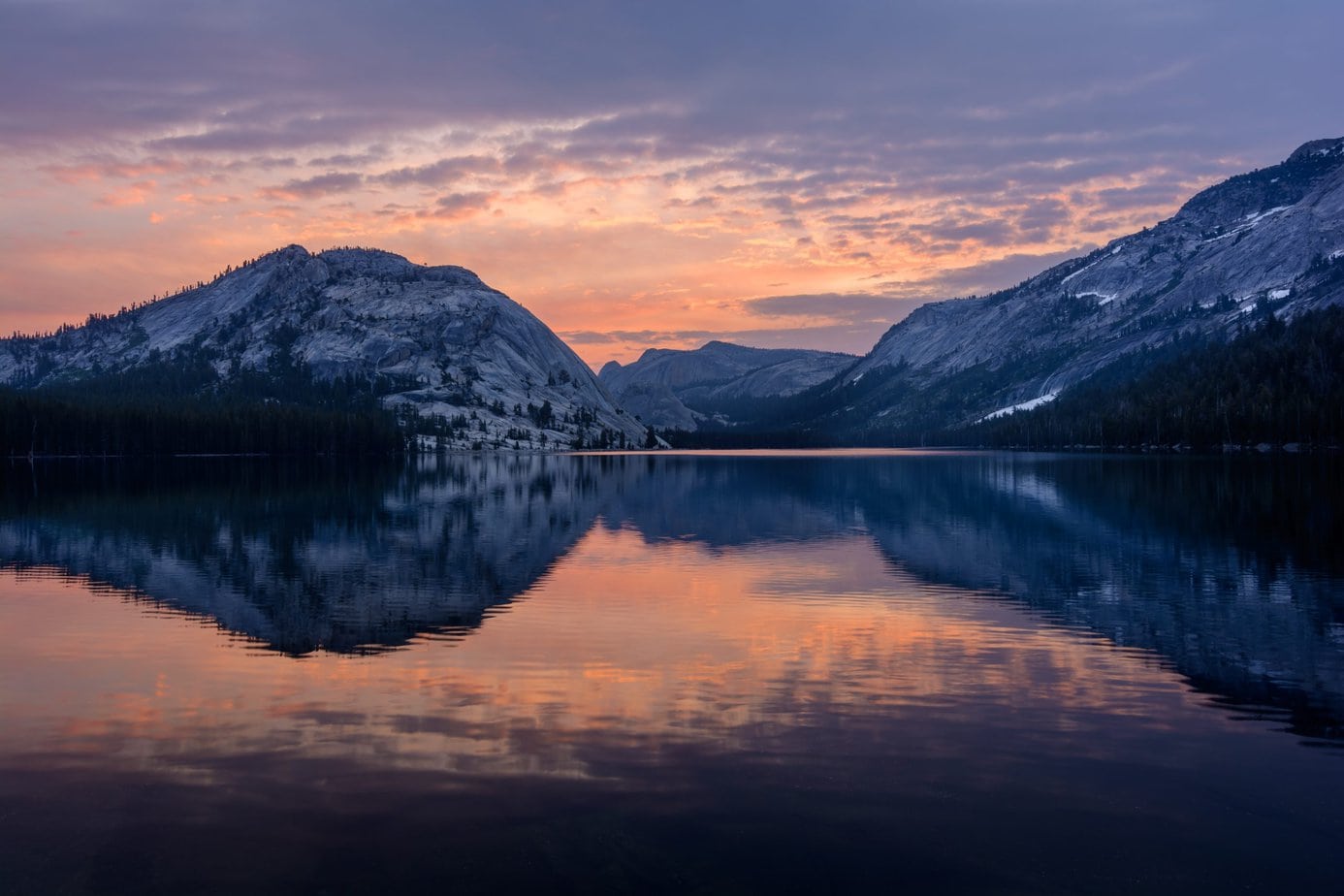
After your morning hike, spend some time at Tenaya Lake.
- Picnic on the sandy shore — pack lunch with you so you can stay in the park instead of driving back out.
- Swim in crystal-clear glacier water (refreshing, to say the least).
- Bring a paddleboard or kayak for a serene afternoon float.
Afternoon: Scenic Stops on Tioga Road
Work your way back toward Tioga Pass with a few short, scenic stops:

- Olmsted Point – Even if you hiked the nature trail earlier, this is worth pulling over for a closer look at Yosemite’s granite wilderness.
- Pothole Dome – A quick scramble with views of Tuolumne Meadows.
- Tuolumne Meadows – Walk along the river or just soak in the view.
Evening: Return to June Lake Loop
Head back to June Lake for dinner. You can:
- Grab a beer and tacos at June Lake Brewing.
- Or enjoy a simple camp meal with sunset views at your campsite.
Either way, you’ll end the day with tired legs, full hearts, and a camera roll bursting with alpine magic.
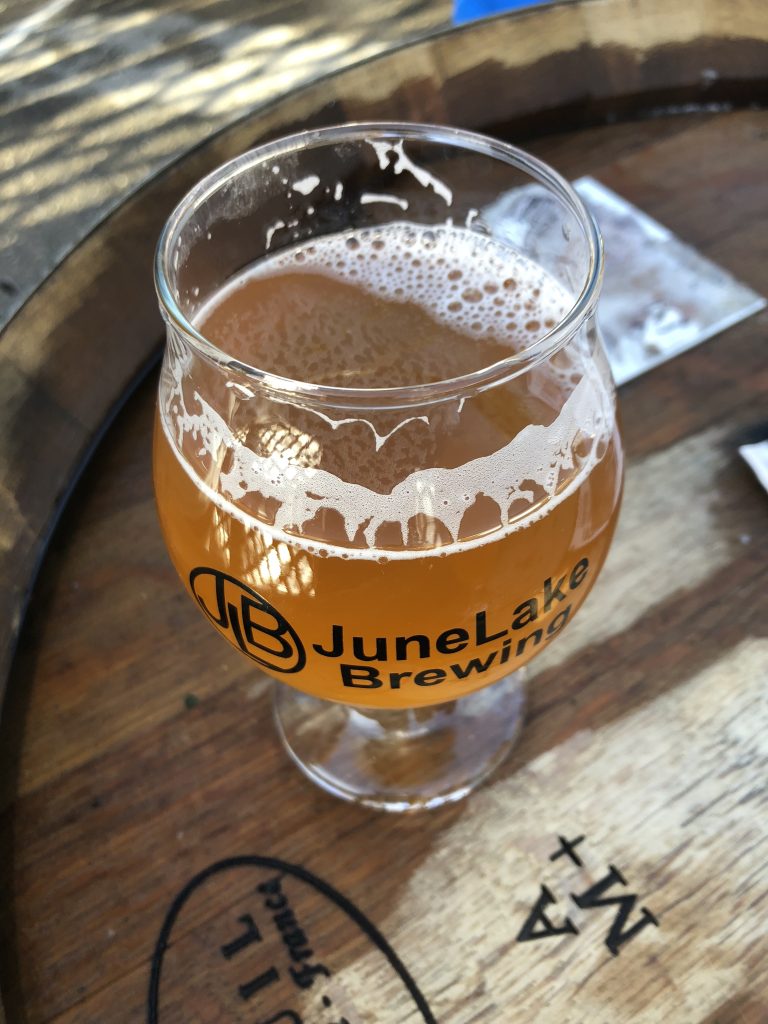
JLB isn’t just about the beer—it’s the whole vibe. The La Parrilla Grill food truck out front serves up hearty plates (I went with the steak tacos this time—so good), and the crowd is always a good mix of locals, hikers, and happy campers.
Sleep hit fast that night, helped by the sound of the nearby waterfall and a belly full of tacos.
Day 3: Lakeside Trails, Relaxed Vibes, and Local Eats
A slower pace, beach time, and soaking it all in
Your morning on the June Lake Loop doesn’t have to be rushed — there’s plenty to do right in the loop before heading home. Whether you want to fit in one more hike, enjoy a lazy morning by the lake, or splurge on a spa day, June Lake delivers.
Morning: Hike Within the Loop
If you’ve still got energy for the trail, here are some of the best hikes right inside the loop — all with scenery worth the effort:

- Parker Lake Trail – 3.6 mi RT, ~600 ft gain, easy–moderate. Short and scenic, this trail takes you to a turquoise alpine lake framed by rugged peaks. Especially beautiful in the morning light.
- Yost Lake Trail – 4.5 mi RT, ~1,700 ft gain, strenuous. A steady climb through forest to a quiet lake that feels far from the bustle of the beach.
- Gull Lake Loop – 2 mi RT, minimal gain, easy. A mellow path around the lake with great fishing spots and views of the surrounding peaks.
- Reversed Peak Trail – 3.6 mi loop, ~620 ft gain, moderate. Offers a 360° panorama of the entire June Lake Loop — great for photographers and sunrise hikers.
- Walker Lake Trail – 2 mi RT, ~487 ft gain, short but steep. The payoff? A secluded, peaceful lake with no crowds.
- Rush Creek Trail to Agnew Lake – 4.8 mi RT, ~1,289 ft gain, moderate–difficult. This trail connects with the John Muir Trail and PCT — perfect if you want a taste of the Sierra backcountry.
Midday: June Lake Beach
After your hike, head to June Lake Beach for swimming, paddleboarding, or simply lounging with a book. In summer, the clear, cold water is a refreshing reward after the morning’s effort.
Tip: The weather here can flip in minutes — always bring a light jacket and be prepared for sudden rain showers.

Lunch: Local Favorites
Refuel at one of these June Lake staples:
- June Pie Pizza Co. – Wood-fired pizzas with fresh, creative toppings.
- Silver Lake Resort Café – Classic diner-style breakfasts, sandwiches, and pies.
- June Lake Brewing + La Parrilla Grill – Craft beer and hearty Mexican plates.
Afternoon: Scenic Drive or Spa Day
- Take another loop drive around CA-158 to see the lakes in different light — stop at Silver Lake, Grant Lake, and Gull Lake for photos.
- Rent a boat or kayak to explore from the water.
- Or, treat yourself at Double Eagle Resort & Spa — book a massage or facial at Creekside Spa, then enjoy their open pool, gym, and hot tubs.
Dinner & Sunset Options
You’ve got two perfect ways to close out the trip:
Option 1: Whoa Nellie Deli + Mono Lake Sunset
Head toward Lee Vining for an early dinner at the Whoa Nellie Deli, famous for its creative, surprisingly gourmet menu inside a gas station. Grab their legendary fish tacos or wild game meatloaf, then head to Mono Lake South Tufa for a golden-hour photo session as the tufa towers glow in the fading light.
Option 2: Pizza + Brewery + Gull Lake Stroll
Stay local and grab a pizza from June Pie Pizza Co., then pair it with a pint at June Lake Brewing. Afterward, take the short walk down to Gull Lake for a peaceful lakeside sunset.
If You Have More Time to Explore
If your June Lake Loop weekend leaves you wanting more (and it probably will), you’re in luck — there’s no shortage of nearby adventures within an hour’s drive. These make great add-ons if you’re extending your trip or planning a return visit.
In June Lake, you can take it slow — stroll to the beach, linger over lunch at June Lake Brewing, or just soak up the mountain views from your campsite. For a real-life look at a more laid-back itinerary, check out this birthday weekend getaway in June Lake guest post.
Bodie State Historic Park
Step back in time at California’s most famous ghost town, frozen in a state of “arrested decay” since the Gold Rush era. Explore weathered wooden buildings, a still-stocked general store, and dusty streets once bustling with miners. Bodie is especially photogenic in the golden hours of morning and evening. (Tip: Wear sturdy shoes—there’s a lot of walking on uneven ground.)
Mono Lake
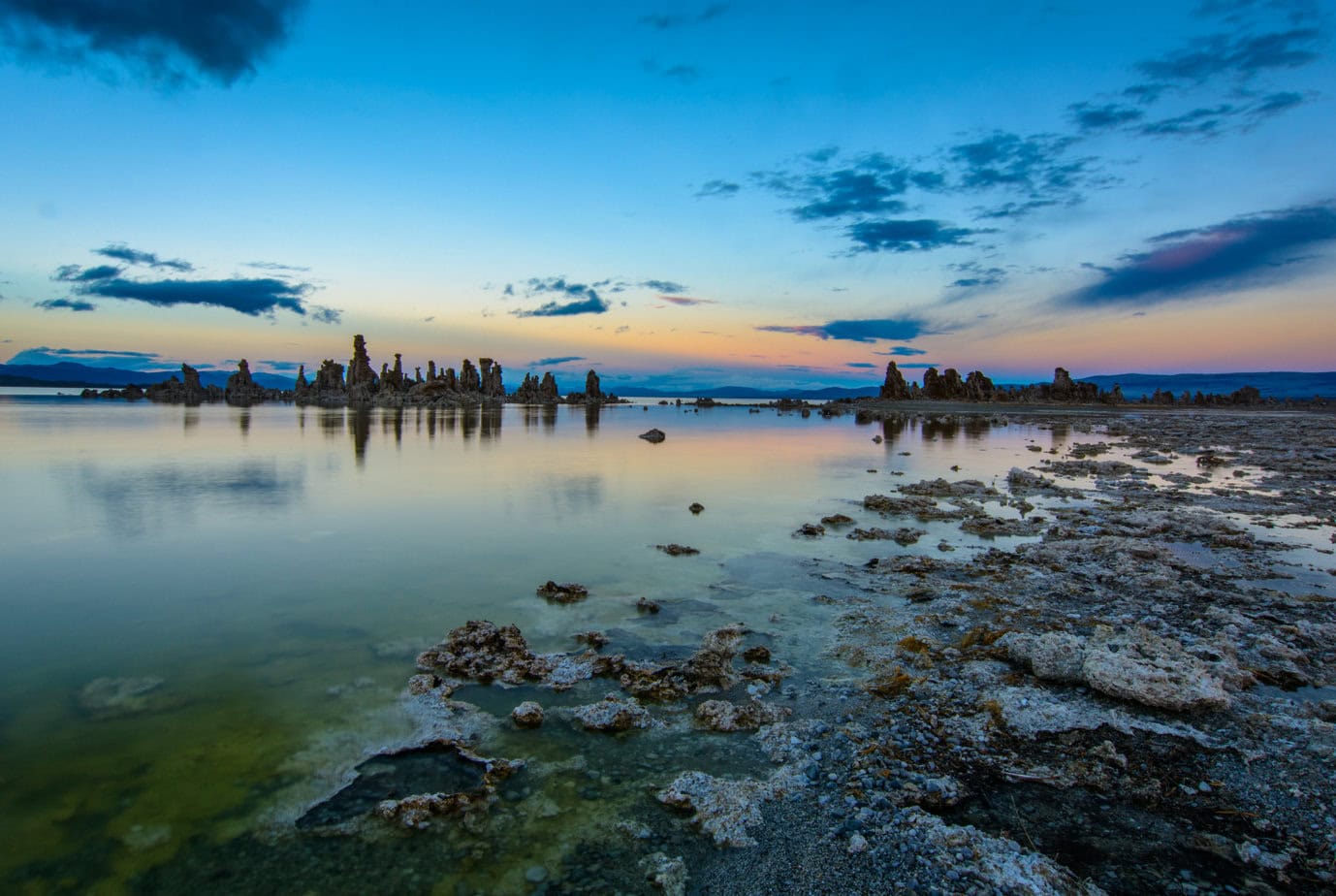
Just 20 minutes from June Lake, Mono Lake is an ancient, saline lake known for its surreal tufa towers. Sunrise and sunset are the best times for photography, especially at the South Tufa area. If you’re visiting midday, check out the Mono Basin Scenic Area Visitor Center to learn about the lake’s fascinating ecology.
Lee Vining
This small gateway town to Yosemite is worth a quick wander. Browse its few local shops, stop by the visitor center, or grab a slice of homemade pie. It’s also a good spot to fuel up before continuing your journey north or back south along Highway 395.
Mammoth Lakes
About 25 minutes from June Lake, Mammoth offers endless year-round adventures. In summer, hike to Devils Postpile National Monument or Rainbow Falls, take the gondola to the summit of Mammoth Mountain, or explore its alpine lakes by paddleboard.

In winter, the ski slopes here are legendary, but non-skiers can enjoy snowshoeing, scenic gondola rides, or après-ski in town.
These spots each have their own magic — and when your detailed guides are ready, you can link them right here for easy trip-planning.
Where to Stay If You’re Not Camping: June Lake Loop Lodging Options
Not everyone wants to pitch a tent or sleep in a camper. Luckily, June Lake has plenty of accommodations that keep you close to nature—just with a little more comfort.
Here are some standout places to stay:
- Double Eagle Resort & Spa: If you want luxury in the mountains, this is it. Cabins and rooms with stunning views, plus a full-service spa, heated indoor pool, fitness center, and even yoga classes.
- June Lake Villager: Centrally located, clean, and cozy. Great for couples or small groups looking for no-fuss, affordable lodging.
- Heidelberg Inn: Classic alpine lodge vibes with full kitchens and outdoor hot tubs. Great for longer stays or family groups.
- Gull Lake Lodge: Perfect low-key home base—just steps from the lake, with roomy suites, full kitchens, pet-friendly vibes, and everything you need to relax between adventures.
- Lake Front Cabins: Tucked just off the main road, Lake Front Cabins offers charming, rustic stays with modern comforts—steps from June Lake, with fire pits, full kitchens, and that cozy cabin feel.
All of these offer easy access to the loop, hikes, lakes, and the brewery—so you can still build your June Lake Loop itinerary, even if you skip the campsite.
Final Tips for Planning Your June Lake Weekend Adventure
- When to Go: Late May through October. July is ideal if you’re hoping for snow-free trails and waterfalls.
- What to Pack: Layered clothing, hiking boots, a daypack, water filter, sunscreen, the AllTrails app, and plenty of snacks. Weather in the Eastern Sierra is unpredictable—bring a rain jacket even in summer.
- Good for: Birthdays, 3-day weekends, couples, solo adventures, small friend groups
- Skip It If – You’re looking for nightlife or luxury shopping — this is about mountain air and alpine lakes. (Though a spa day at Double Eagle or a soak at a nearby hot spring can be your post-hike treat.)
If you’re dreaming of a trip that smells like pine, sounds like rushing waterfalls, and feels like true freedom—this is your sign. Whether you’re chasing summits, paddling alpine lakes, or just resetting in nature, the June Lake Loop is the kind of place that keeps calling you back.
For more trip ideas, itineraries, and real-deal travel inspiration, check out mintatravels.com.
